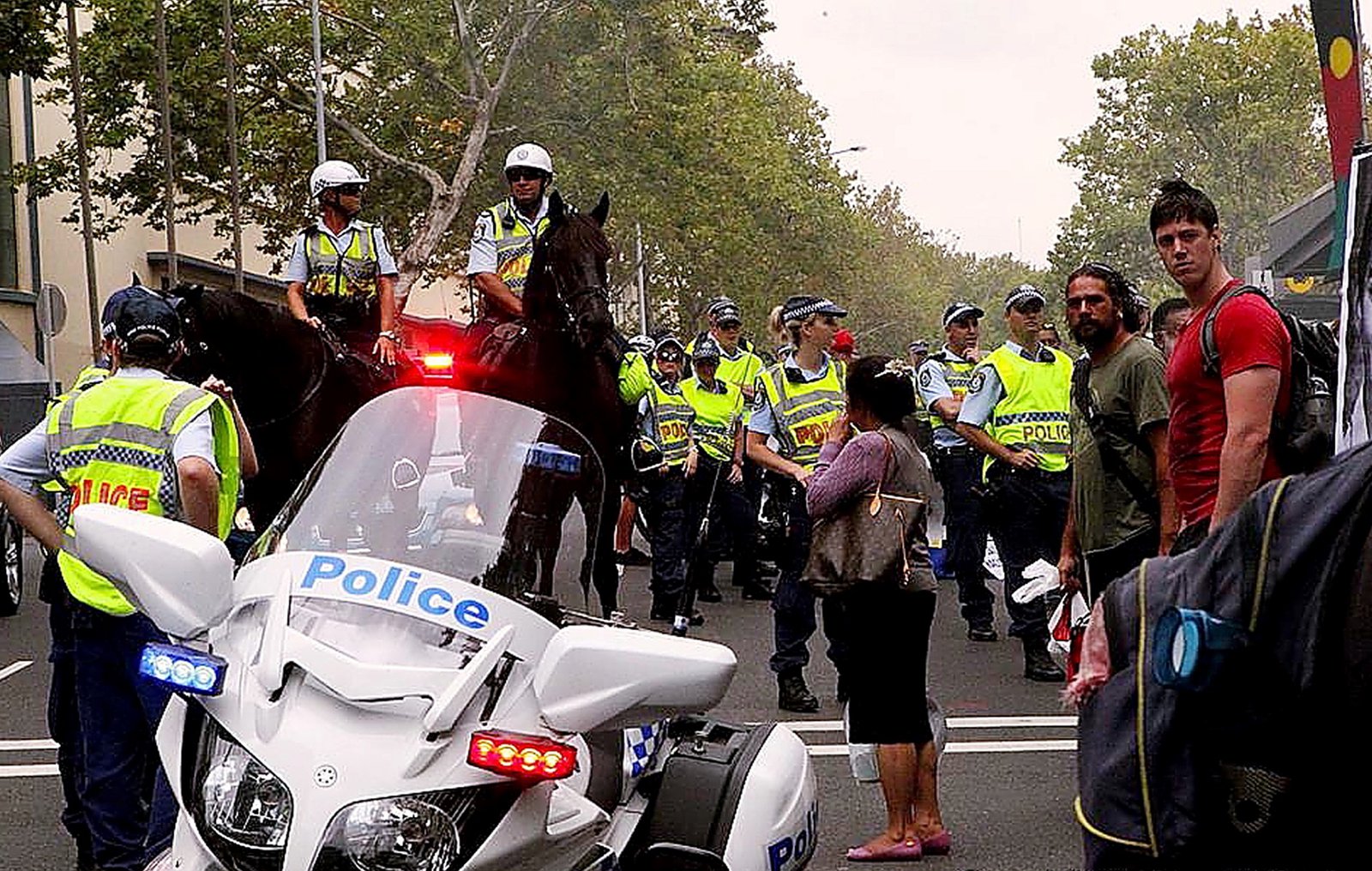No justice, no peace
On this page...
Curators’ acknowledgement
“We pay our respects and dedicate the Unsettled exhibition to the people and other Beings who keep the law of this land; to the Elders and Traditional Owners of all the knowledges, places, and stories in this exhibition; and to the Ancestors and Old People for their resilience and guidance. We advise that there are some confronting topics addressed in this exhibition, including massacres and genocide. Aboriginal and Torres Strait Islander peoples should be advised that there may be images of people who have passed away.”
Laura McBride and Dr Mariko Smith, 2021.

© Barbara McGrady
Historically, police have been instrumental in carrying out retributive violence against Aboriginal peoples, being directly involved or implicated in massacres, dispersals, child removals, and controlling the movements of the Aboriginal population. This has not been truthfully acknowledged, so there is no closure or healing.[1]
The Australian colonial model of policing is influenced by these historical beliefs that Aboriginal people are inherently criminal and negligent, resulting in racial discrimination through the Australian justice system even today.
First Nations people call for a fairer system where they can receive the same protections as other Australians.
Read about Deaths in Custody and what museums can do to effect change here.
Did you know?
The 1991 Final Report of the Royal Commission into Aboriginal Deaths in Custody had 339 recommendations. Very few of these have been actioned. Over 450 First Nations people have died in custody since this time.[2] Lest We Forget.

© Barbara McGrady
References:
- Australian Government. (1991) Final Report: Royal Commission into Aboriginal Deaths in Custody. Research Paper, Parkers, ACT, Australian Government Publishing Service; Australian Human Rights Commission. (1997). Bringing them home: Report of the national inquiry into the separation of Aboriginal and Torres Strait Islander children from their families. Chapter 21 (Children Welfare Care and Protection), from https://humanrights.gov.au/our-work/bringing-them-home-chapter-21; Australian Institute of Health and Welfare (2018). Aboriginal and Torres Strait Islander stolen generations and descendants: Numbers, demographic characteristic and selected outcomes. Canberra, ACT, Australian Institute of Health and Welfare; Cunneen, C. and Tauri, J., (2016) Indigenous criminology (1st ed., Vol (1). Policy Press; Baldry, E., & Cunneen C., (2014) Imprisoned indigenous women and the shadow of colonial patriarchy. Australian and New Zealand Journal of Criminology; Porter, A. (2018). Non-state policing, legal pluralism and the mundane governance of “crime”. The Sydney Law Review, 40(4), 445-467.
- As at April 2021. Newitt, R. (2021). Four Aboriginal deaths in custody in three weeks: Is defunding police the answer? The Conversation (Australia) From https://theconversation.com/four-aboriginal-deaths-in-custody-in-three-weeks-is-defunding-police-the-answer-157879; Dodson, P., Wootten, H., O'Dea, D., Wyvill, L. and Johnston, E. (1991). Royal Commission into Aboriginal Deaths in Custody: Final Report. Australasian Legal Information Institute (AustLII), Government of Australia.



